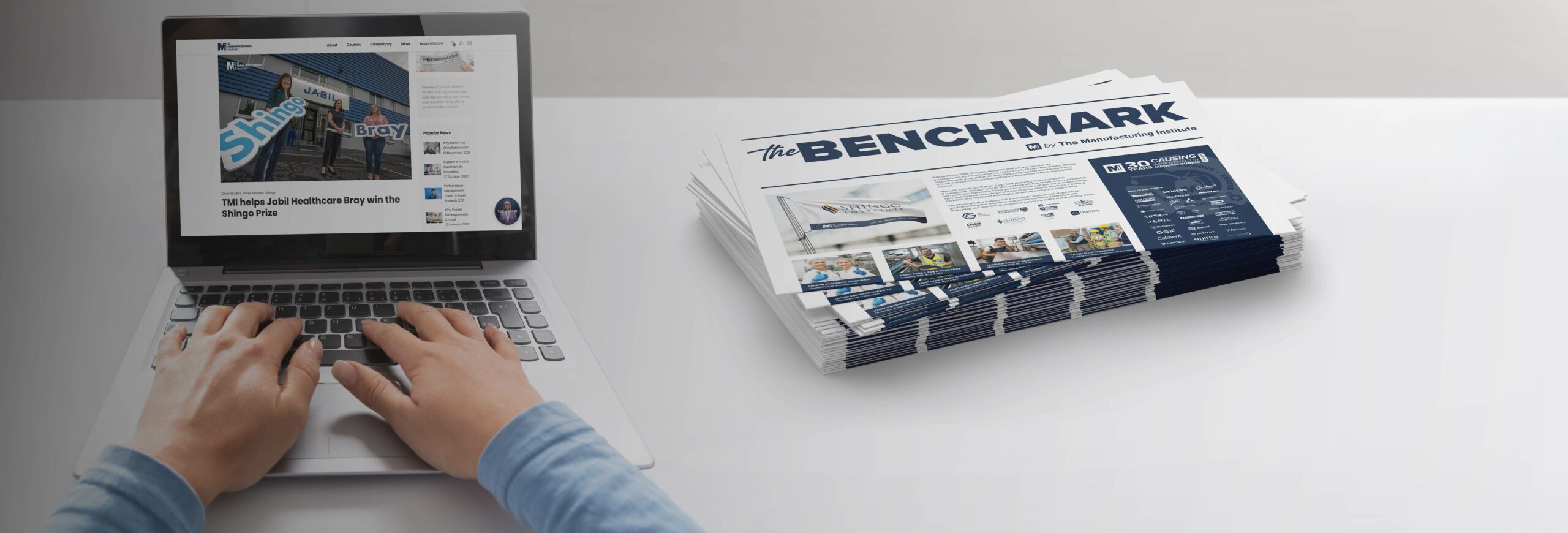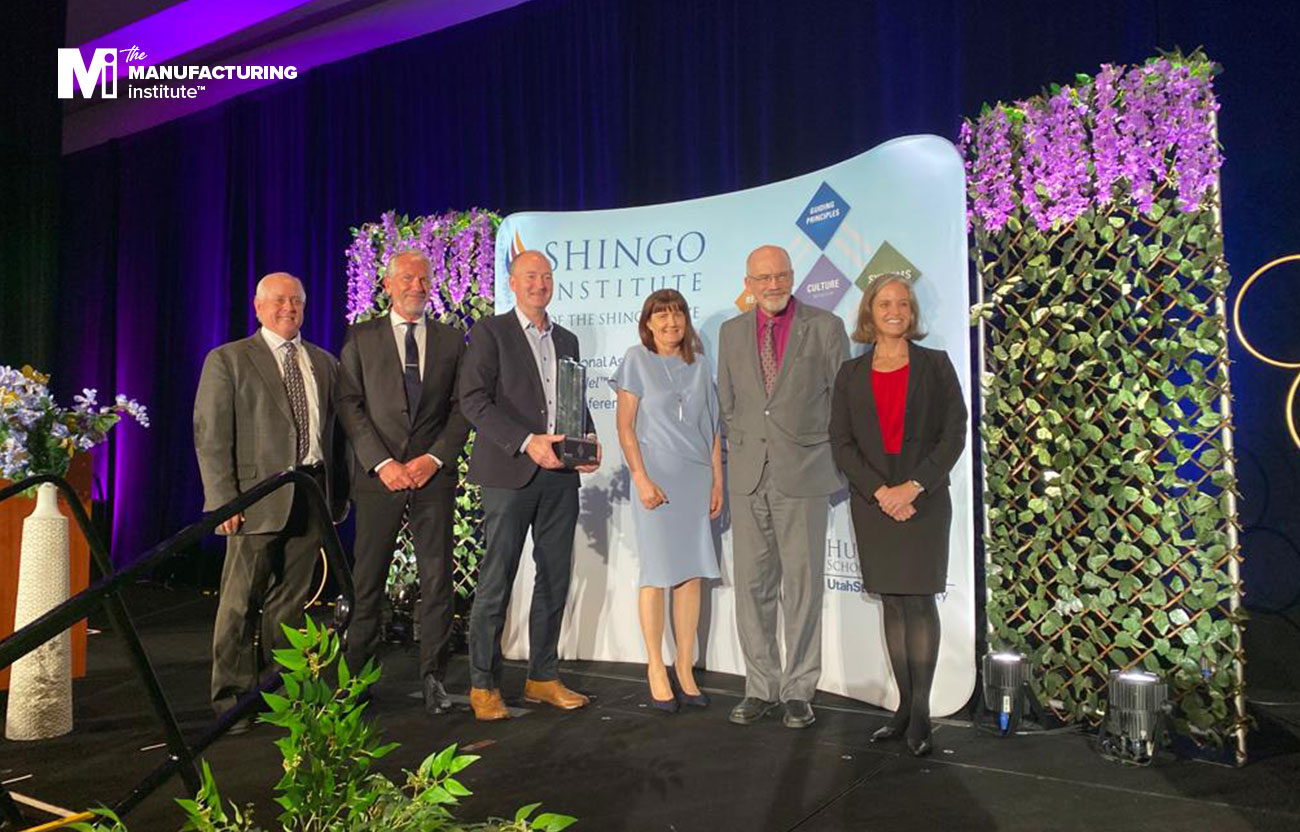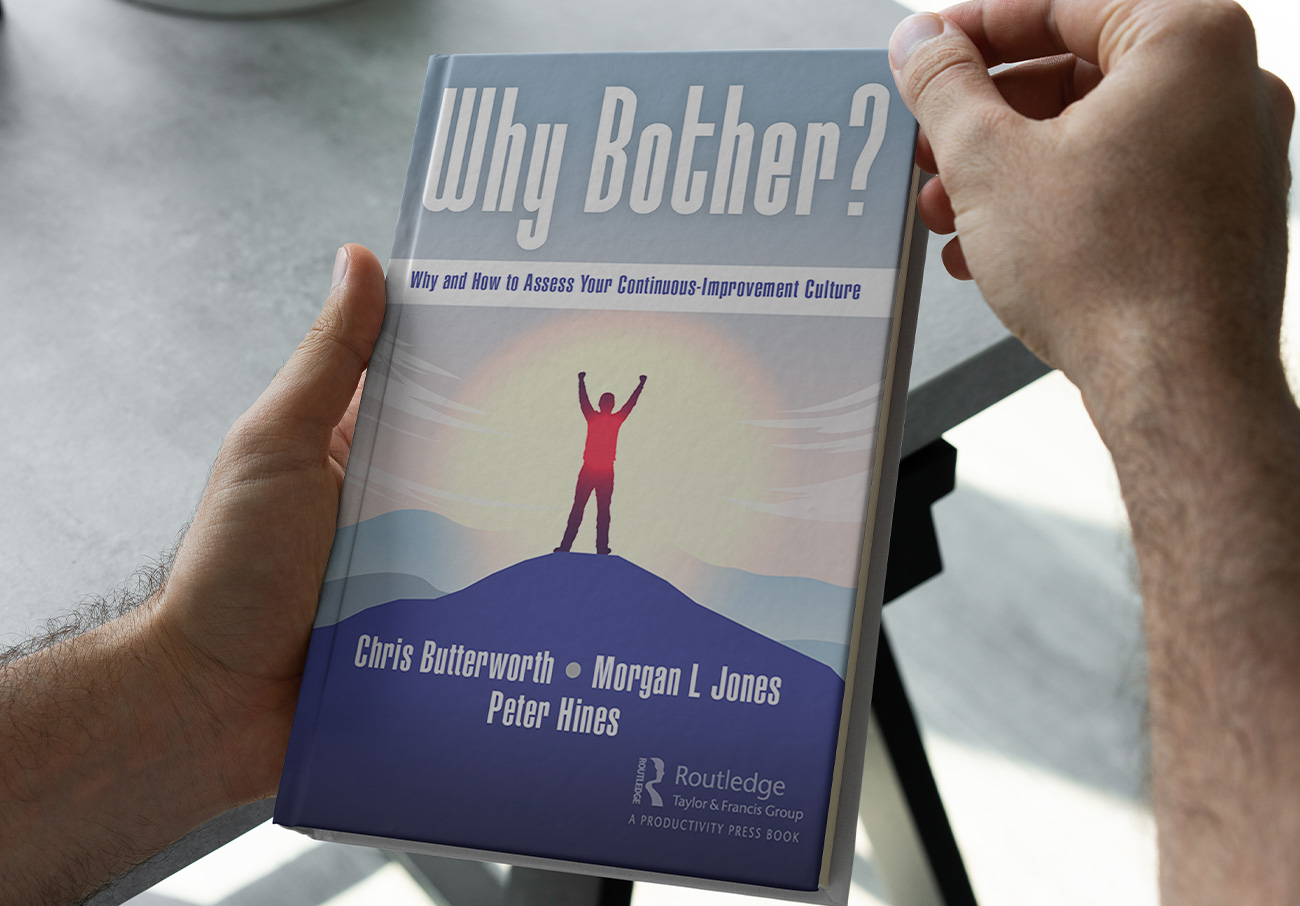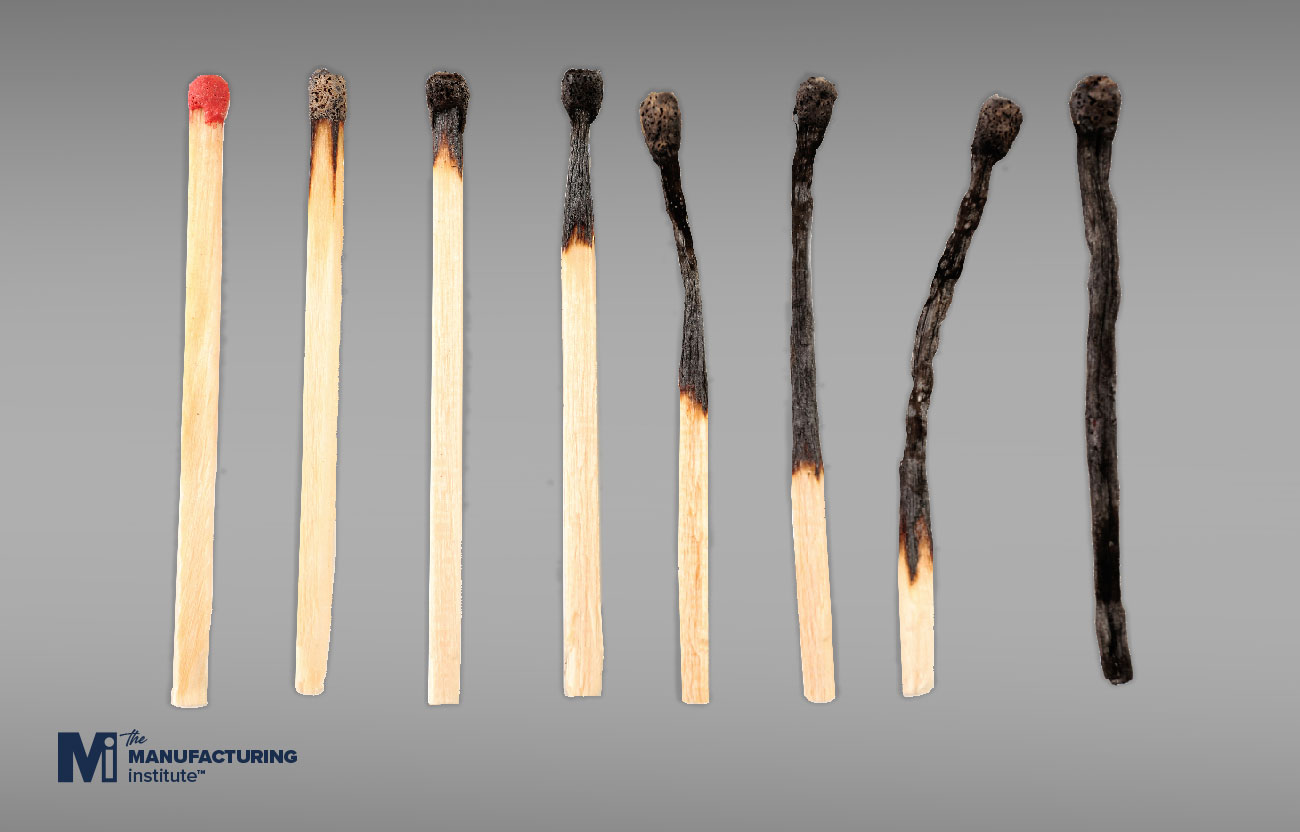
Shingo Principles: Help Prevent Organisational Burnout
The term burnout was coined in the 1970s by the American psychologist Herbert Freudenberger to describe the consequences of severe stress. Today, burnout seems to have become a mass phenomenon that affects people in all professions. It is also one of the most widely discussed mental health problems of our time.
A recent report from global recruiting giant Indeed found that employee burnout is on the rise, with 52% of all workers reporting that they feel burned out (up 9% from a pre-COVID survey). And there’s certainly no shortage of statistics around burnout in the manufacturing sector. According to Manufacturing Management, employee pandemic burnout levels in manufacturing were more than twice that found in any other sector.
What does burnout look like in a business? TMI 2022©
Key symptoms of personal burnout include fatigue, lack of energy, loss of appetite, insomnia, forgetfulness, mood changes (including anger), an inability to concentrate, a tendency to get ill more often, anxiety, and depression. Does any of this sound familiar to you?
What does burnout look like in a business? It might look like procrastinating leaders who are unwilling to seek input, listen carefully, or create an environment where people feel appreciated and respected. Or it might look like apathetic communication and laissez-faire organizational objectives, dense over-complexity without tenacity around problem solving or process development. It might look like unhelpful and negative gossip, endless hearsay, and speculation. Maybe it’s a lackadaisical attitude toward quality and customer service or the inability to tackle improvement with a plan. Sometimes, it can be broken technology, implemented (or not), that should support processes and people. Then there’s the lack of transparency around purpose: where are we going now and how will we get there today? This is what bad looks like.
This summary is not exhaustive and it is not meant to be overly dramatic. Just one or any of these issues could be applied to most businesses, even in a small way. We’ve all experienced them. But post-pandemic, it appears that we are no longer prepared to live with it. In both business and life, it seems that when one thing is going well, something else needs attention. But when processes collapse and things collectively slide, businesses burnout.
A familiar example: A machine that has not been commissioned or maintained correctly will create stress for the operator. The operator’s manager might be aware of the problem but is unable to act due to lack or resources or investment. And while the company might be prepared to live with mediocrity, they will still want results. The pressure for results will fall to the operator, which will result in low job satisfaction, frustration, and resentment because he feels like no one is listening. Eventually, the operator will experience burnout. Moreover, we know that one dissatisfied customer will tell between 9 and 15 people about their experience with a given business. The same is true of employees. And that is how the rot sets into culture.
“When pressure and poverty are knocking on the shutter door,
culture and opportunity go out of the window.”
Googling the term burnout will give you the following definition: “to ruin one’s health or become completely exhausted through overwork.” Search engine results do not define burnout as a means “to ruin your employees’ health, morale, and commitment through overwork, disorganization, and endemic dysfunction.” We just don’t think of burnout in this way. We may, as individuals, blame ourselves or organizational life in the same way an employer might simply put profit over people. Where employers are not invested in the concept of whole organizational improvement or are simply ignorant to the tools that enable problem solving there is burnout.
Christina Maslach, author of The Truth About Burnout (Maslach, Leiter 1997), ardently believes that burnout is not a problem with people themselves but with the social environment in which people work. This is compounded by problems in economic trends, technology, management philosophy, and, more recently, the COVID-19 pandemic.
From mills, mines, and the Industrial Revolution of the early nineteenth century to Industry 4.0 (feminism, BLM, #️metoo diversity, inclusion, COVID-19, and the overarching power of social media), there is no doubt that the twenty-first century workplace has changed significantly, especially post-pandemic. Crucially, so have the expectations around leadership.
For example, in 1939, Kurt Lewin identified three types of common leadership styles seen in business: autocratic, democratic, and laissez-faire. Now this list of adjectives is much longer. It also includes transformational, transactional, servant, charismatic, bureaucratic, visionary, coach, and includes a touch of counselor, environmentalist, comic/TEDx speaker, and, if you’re leading by example, cleaner, cook, and bottle washer.
Naturally, the stresses of major social change and the isolation of the home office in the new normal (where once employees might vent their frustrations with friends and colleagues in a bar or club or confess in church) must end up somewhere. And that place is the workplace. Consequently, it is inevitable that these stresses should impact the cultural dynamic and require more versatile leaders and, successively, frameworks that support leadership and drive an optimistic all-inclusive narrative.
Now more than ever, people are questioning what they value, how they are treated, what brings them happiness, what’s worth the fight. The world and the workplace is questioning leadership. We are more vulnerable to burnout than ever before because any disconnect that erodes morale will naturally impact performance and commitment. And where once employees might have kept calm and carried on, now they don’t, and the leadership carries the can.
Keep Calm and Carry On was a motivational poster produced by the British Government in 1939 in preparation for World War II.
During the pandemic, manufacturing plants had to stay open. They quietly continued in the background during closures and constantly changing safety requirements. They produced the world’s essential goods despite the challenges of ever-changing and restrictive regulations, quarantined employees, supply chain problems, and shipping delays. And it is not over yet. Now there is a labor shortage, with talent acquisition and attrition already reported as an enduring key challenge for manufacturers.
At the Manufacturing Institute, we imagine that understanding and addressing burnout triggers in the current state and the subsequent prevention of burnout in the future state is the most obvious benefit to continuous operational and cultural improvement. In the context of burnout, we believe this is a differentiating strength of the Shingo framework: its ability to change and impact an organization from the inside out.
The situational ‘as-is’ analysis around current state should be rigorous. In capturing information about leadership, policies, processes, and technologies, the Manufacturing Institute would never define something as burned out. This language is not commonplace in our field of consultancy. But in our twenty-first century working environment, terms such as mental health, well-being, resilience, and psychological safety are now prevalent, and burnout is a major contributing factor.
As with all Shingo Licensed Affiliates, the Manufacturing Institute regularly conducts benchmarking exercises and, despite our professional experience and gentle consultative enthusiasm, this is sometimes a superficial process. Heavily centered around the manufacturing shopfloor, selected areas such as finance and human resources are often siloed. Additionally, no matter how “open for business” people think they are, they don’t want to be emotional, especially around problems and culture. And people certainly don’t want to feel blamed.
Interestingly, when problems are articulated in the burnout state, they are significantly more approachable, relatable, and manageable, especially when contextualised around the Shingo Guiding Principles. Use of modern, relatable language and terminology is an important factor in getting things over the line.
| BURNOUT | ⇦ CONNECT ⇨ THE DISCONNECT ⇩ EXHAUSTION CYNICISM INEFFECTIVENESS | SHINGO |
| Absence of Fairness and Conflicting Values | Guiding Principles | |
| Lack of Control | Tools and Systems | |
| Work Overload and Insufficient Reward | Results | |
| Breakdown of Community | Cultural Enablers |
In 2022, Jabil Healthcare Bray was a worthy recipient of the Shingo Prize. When they were asked how it differed from other continuous improvement initiatives, they said it was because people, who were usually cynical or hung back, were swept up with the holistic momentum of the Shingo framework. It had created a movement around pride. The simple fact is that people do their best when they are doing what they believe in and when they can maintain their pride, integrity, and self respect.
What this demonstrates is that culture can make or break any business and that by changing the workplace culture, you can turn a toxic business into an employee magnet. But there is a key ingredient: leadership. The habits of great leadership always set the tone, and this is our experience at the Manufacturing Institute. Above all, leadership behaviors, integrity, and engagement are critical to finding a way to prevent business burnout.






